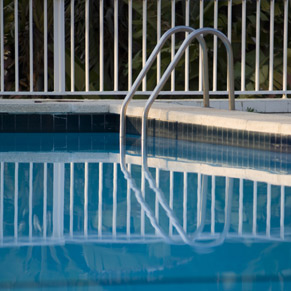:::

Learn to Swim
Basic swimming ability is a fundamental requirement in any
meaningful attempt to eliminate drowning in Canada. The Lifesaving
Society offers training programs from learn-to-swim through advanced lifesaving, lifeguarding and leadership.
Our Swim for
Life program stresses lots of in-water practice to develop
solid swimming strokes and skills. We incorporate valuable Water
Smart® education that will last a lifetime.
Enhance safety in your pool (or your neighbour's pool) by using
the Society's Backyard Swimming Pool Checklist, available on our
website, or ask a NLS-certified lifeguard to complete the
inspection. Those who do will receive the Society's Backyard Pool
Safety Inspection Certificate free. Call your local pool for help
finding a lifeguard to conduct this inspection.
Swim to
Survive is a Lifesaving Society survival training program. Swim
to Survive is not a subsititute for swimming lessons; instead, it defines the
minimum skills needed to survive an unexpected fall into deep
water. People of all ages should be able to perform the Society's
Swim to Survive standard.
:::
Backyard pools remain the number one location
where children under age five drown (31%)
The biggest risk factor is lack of supervision from parents or
caregivers. Almost all young victims were alone when they became
immersed in water.
The Lifesaving Society believes you must control and restrict
access to the pool area with layers of protection and closely
supervise these fearless toddlers - "if you are not within arms'
reach, you've gone too far."
Fencing law breaks new ground
In May 2008, Toronto City Council revised a bylaw to require all
new in-ground pools to be enclosed by a permanent four-sided fence;
or, where the wall of a building forms part of the swimming pool
entrance, the use of a self-closing and self-latching door is an
alternative to a fourth fence.
This is in contrast to most North American municipalities that
require only a three-sided fence (with the fourth side being the
house). Safety experts, including the Lifesaving Society, strongly
believe this is insufficient to prevent toddlers from inadvertently
accessing a backyard pool when the door is left unlocked or
open.
"With three-sided fencing, you are protecting all of your
neighbours' children from coming into the pool area, but not the
children in your house," said Barbara Byers, the Society's public
education director. And backyard pools are the number one location
for drownings of children under the age of five. Four-sided fencing
that isolates the swimming pool from the home is widely
acknowledged as the most effective strategy to prevent such
drownings because it does not require human interaction to work -
it is always in place.
The most stringent swimming pool enclosure regulations are those
in Queensland, Australia, where regulations require compulsory
four-sided fencing on all outdoor residential pools, irrespective
of when the pool was constructed.
:::

The Lifesaving Society encourages all backyard pool owners to
fence in their pools on all four sides and to ensure the pool gate
is: securely fastened, self-closing, and can be locked when the
pool is not in use. Backyard pools should be inspected at least
annually by the pool owner or by an NLS-certified lifeguard
recruited by the owner.